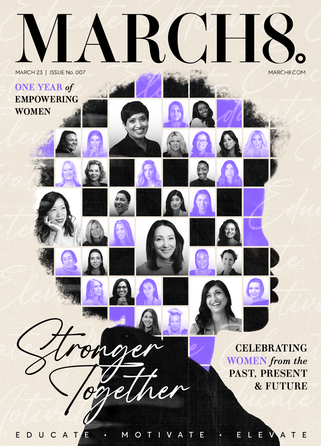Compare and despair: The disastrous impact of social media

Flawless skin. Teeny-tiny waists. Blindingly white teeth. These are just some of the attributes that flood our social media feeds daily, establishing a standard that we’re all expected to aim for – yet one that many of us feel we fall woefully short of.
But if it’s not the physical characteristics that cause you gut-wrenching jealousy, maybe it’s the endless lavish holidays, extraordinary job opportunities, or fast cars?
It’s easy to explain that we, as well as everyone else on social media, only post the best days of our lives, somehow always forgetting to post the worst. It’s hard to remember this as we’re looking through our feeds, though, wondering how others have everything that we don’t. This is known as comparison culture.
Comparison culture may seem harmless enough; maybe it just kills your Sunday mood or encourages you to visit the gym more regularly. But the reality is much more sinister. Social media has been linked to increased loneliness, anxiety and depression, as well as self-harm and suicidal thought – after all, there’s a reason people have started referring to it as ‘doomscrolling’.
According to research published in Nature Communications, girls generally tend to have their first negative experience with social media between 11-13 years old and boys at 14-15 years old. Those who continue using social media are predicted to feel less satisfied with their life by the age of 19, compared to those who don’t.
Negative interactions on social media have a ‘death by a thousand cuts’ effect, slowly eroding self-esteem one scroll at a time. So much so that research goes as far as to say that social media sensitivity has been linked to developmental changes – possibly altering the structure of the brain – or to puberty, in ways reminiscent of how trauma in early childhood rewires the brain’s responses and reactions.
“Childhood and the teenage years are very important times when the brain rapidly develops,” says Dr Joanna Silver, Lead Psychological Therapist at Orri. “Social media can be very addictive and excessive use can interfere with sleep, which is particularly important for teenagers. Social media lacks regulation, meaning that some young people become victims of cyberbullying, which can be very distressing while also catalysing other issues.”
Body image v mental illness
Everyone has social media now: mums, dads, grans, grandpas – even the family dog. And it’s now far harder to find a teen that doesn’t use social media than one that does, with 90% of 13-17 year-olds sharing that they’ve used at least one platform. If that stat doesn’t shock you (and with today’s social media obsession, rightly so), how do you feel learning that teens spend an average of nine hours a day online – not including time for homework, according to the American Academy of Child and Adolescent Psychiatry.
When all this time is spent looking at screens filled with lifestyles, bodies and products that we can’t afford or attain, the link between social media and mental health issues seems to become a lot more obvious.
“Studies have linked social media to increased levels of depression and anxiety, especially as many users tend to post their best pictures, not showing an accurate picture of real life,” says Dr Ann Kearney-Cooke, Psychologist specialising in the treatment of adolescents, eating disorders, body image and self-esteem. “This can leave teens feeling inadequate and can also lead to increased risk of cyberbullying, exposure to online predators and forming dangerous relationships with people met online.”
“Adolescence is a time to create a strong sense of self while developing healthy connections with friends and family. Instead of creating their own image, teens can base their values off people they see online, influencing them to recreate the image of others they often don’t know.”
Dr Joanna supports this point, adding: “Unfortunately, the levels of mental illnesses in young people are rising and it is important that we look at the role of social media in this. The teenage years can be a vulnerable time for social and emotional development, and excessive use can interfere with this development.
“Comparing the self with an unrealistic ideal can damage young people’s self-esteem and can increase levels of anxiety and depression. Social media can be helpful for young people but the unregulated nature of it means they potentially have access to dangerous material and they may not have the skills to manage the information that they are exposed to.”
Anorexia, bulimia and body dysmorphia
Global eating disorder statistics increased from 3.4% in 2021 to 7.8% in 2022, which equals 70 million people internationally. Eating disorders are most prevalent in young women. In fact, half of all Americans report knowing someone with an eating disorder and 1 in 50 Americans struggle with body dysmorphia.
A study of 496 adolescent girls aged between 8 and 20 found that more than 5% of the girls met the criteria for anorexia, bulimia, or binge-eating disorder, and more than 13% had experienced an eating disorder when including non-specific disordered eating symptoms.
Amelia Sordell, founder of personal branding agency Klowt, shares how she had bulimia from the age of 15 to 21, which was triggered after she was sexually assaulted at 13 years old. “The body issues I developed came from the idea that I wasn’t worthy or good enough – that’s why it happened to me,” Amelia explains. “Bulimia then became a way in which I could control these feelings. Of course, social media wasn’t the cause, but every time I posted and people would comment about how much weight I’d lost or how skinny I looked, it reinforced the narrative that I needed to lose more.
“I remember enjoying feeling hungry because I thought that meant I would look skinny. But now, when I see old photos, I realise how unhealthy and gaunt I looked,” Amelia adds. “We’re raised to want validation, so when friends, family members and often strangers online praise us for filling our lips, losing weight or changing our hair, we become hard-wired into believing that what society perceives to be beautiful is true.”
“Eating disorders and body dysmorphia are complex illnesses and, as Amelia says, are not caused by social media alone,” Dr Joanna comments. “However, it can contribute to the issues as many images on social media are unrealistic or photoshopped, young girls often compare themselves negatively to a perceived-perfect body.
“Unfortunately, some people will use social media to promote eating disorders and will share stories and photos. This can glamorise eating disorders to young girls and make them unaware of their destructive natures. Even sites that are not knowingly promoting eating disorders can be triggering to young people who may be susceptible, particularly when they emphasise the importance of weight (or BMI), shape and eating food that may be labelled as ‘good’ or ‘bad’. However, some social media sites can be very helpful for people who are suffering from eating disorders and body dysmorphic disorders and can help promote recovery.”
Why it’s unfair to compare
Although social media was launched with the (inherently good) intention of allowing users to share real-life updates with their friends and family, it’s now grown a darker side, where photoshopped images, heavily-edited videos and elaborate lifestyles reside.
“Our parents used to compare themselves with ‘the Joneses’,” Amelia says. “Now, we compare ourselves to the Kardashians, who have personal trainers, chefs and millions of dollars to help them achieve their desired aesthetic. As a generation, we’ve almost normalised photoshopping images and have passed this on for young girls to follow suit. Although these might attract more likes and give us an instant dopamine hit, it slowly diminishes our self-esteem.”
Dr Joanna adds to this point, stating that it’s “imperative” for young people to be educated on photoshopping, so they are aware that these images are often not real. “Parents can help young people by putting time limits on social media usage and encouraging young people to socialise in real life. They can also provide support to young people struggling with their self-esteem by pointing out their qualities and by not focusing on appearance.”
From Amelia’s turbulent relationship with food, she has developed a passion for ensuring her children – especially her daughter – don’t have to live the same experiences as she did. “I’ve reframed my mindset from ‘I hate parts of my body’ to ‘I’m so grateful to have it’. For example, I used to hate my nose, but now I know it lets me smell red wine, and I used to hate my belly pouch, but now I know it’s the result of having two beautiful children.
“My children are at the age where they’re learning what a balanced diet is. I want them to grow up understanding that all foods are good in moderation and that there’s no such thing as inherently ‘good’ or ‘bad’ foods.
“My take-home message is: curate the social media feeds you want to see. Now, I only follow powerful women who exude feminine beauty and are natural to the point where they look unfiltered. And, of course, learn to love yourself, because then everything else is irrelevant.”
Featured Articles
B Corporation certification has long been hailed as the gold standard of sustainability – we explore why
How does a retail investor replicate, as closely as possible, a venture capital investment strategy? Paula Tavangar of SwissBorg Ventures explores
Michelle Li shares how parents can ensure their children are taking the right steps to a more sustainable future



